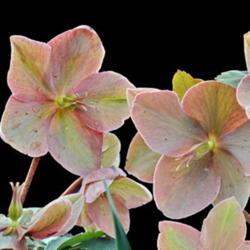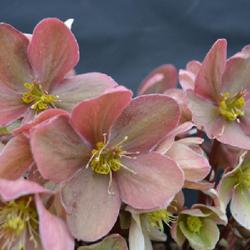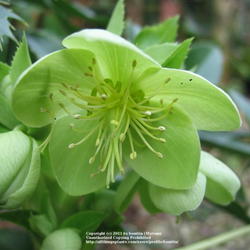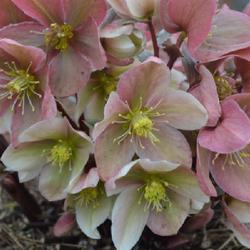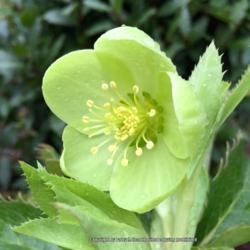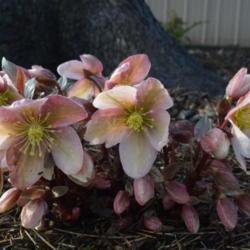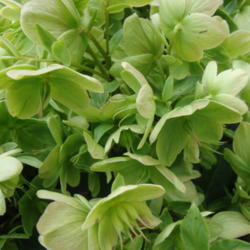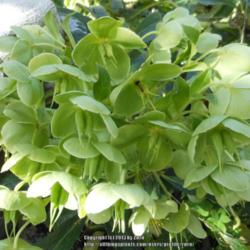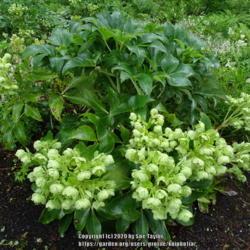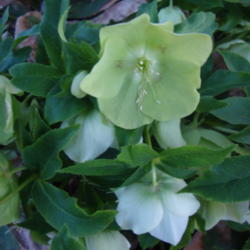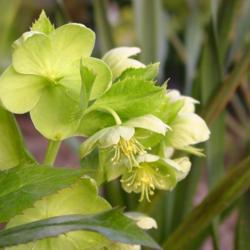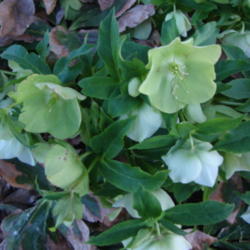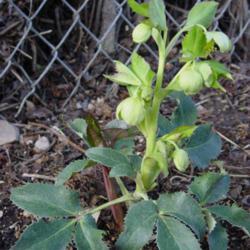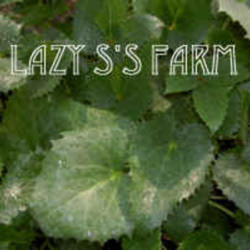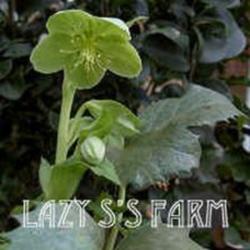General Plant Information (Edit)
| Plant Habit: |
Herb/Forb
|
| Life cycle: |
Perennial
|
| Sun Requirements: |
Full Sun to Partial Shade
|
| Plant Height: |
36 inches |
| Leaves: |
Evergreen
|
| Flowers: |
Showy
|
| Flower Color: |
Green
Other: Green
|
| Bloom Size: |
1"-2"
|
| Flower Time: |
Late winter or early spring
Spring
Winter
|
| Uses: |
Provides winter interest
Cut Flower
|
| Wildlife Attractant: |
Bees
|
| Resistances: |
Deer Resistant
|
| Toxicity: |
Other: All parts of the plant can be highly toxic if ingested and can cause eye and skin irritation
|
| Propagation: Seeds: |
Stratify seeds: Cold stratification may not be necessary but is usually recommended
Other info: Hellebore seed may take 6-18 months (or more) to germinate
|
| Propagation: Other methods: |
Division
|
| Containers: |
Suitable in 3 gallon or larger
|
| Awards and Recognitions: |
Other: 2002 Great Plant Picks Award Winner
|
- Hellebore
- Holly-Leaved Hellebore
- Corsican Hellebore
- Corsican Rose
- Accepted: Helleborus argutifolius
- Synonym: Helleborus lividus subsp. corsicus
- Synonym: Helleborus corsicus
Posted by
jathton (Oklahoma City, OK - Zone 7a) on Feb 7, 2020 4:38 PM concerning plant:
I'm sure you have heard the expression "harbinger of spring."
For as long as I can remember, in Oklahoma City, that phrase has been the exclusive property of Forsythia and Flowering Quince.
I'm delighted to be able to say they have been replaced in my garden by the Hellebores. When I see them blooming I know spring is coming around the corner.
In the last three years, and this year, my Hellebores have been and are in bloom by February 10th. This year the first blooms opened on February 2nd. Two days later we received the most snow we've gotten at one time since 2013. All my Hellebores bowed their heads beneath this blanket of white. But two days later the snow has melted and the Hellebores are once again standing proud with open and opening blooms.
Posted by
SongofJoy (Clarksville, TN - Zone 6b) on Jan 3, 2013 2:49 AM concerning plant:
Long periods of extreme cold will affect stems and roots. Plants may suffer frost damage and turn brown before new foliage appears and may produce no seed at all if conditions are harsh in late winter. Roots and stems usually suffer little damage. Even after cold winters new foliage will appear. Cutting back old foliage in late winter is advisable to provide new growth and better air circulation around the base of the plant.
« Add a new plant to the database
» Search the Hellebores Database: by characteristics or by cultivar name
« See the general plant entry for Hellebores (Helleborus)
« The Hellebores Database Front Page
« The Plants Database Front Page
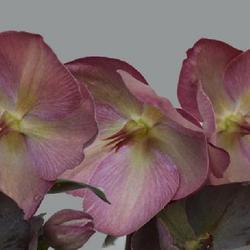


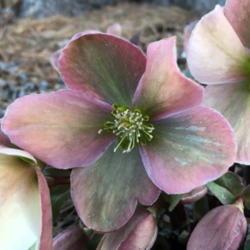
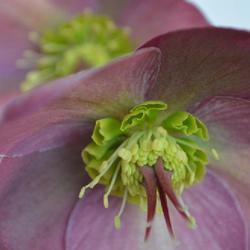
![Location: in my garden in Oklahoma City
Date: 04-17-2018
Helleborus lividus subsp. corsicus[Corsican Hellebore] Location: in my garden in Oklahoma City
Date: 04-17-2018
Helleborus lividus subsp. corsicus[Corsican Hellebore]](/pics/2020-11-07/jathton/fc91db-250.jpg)

